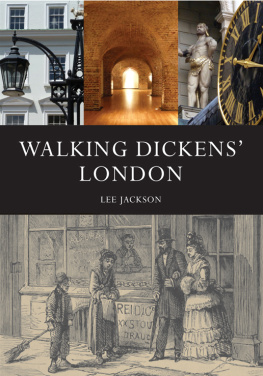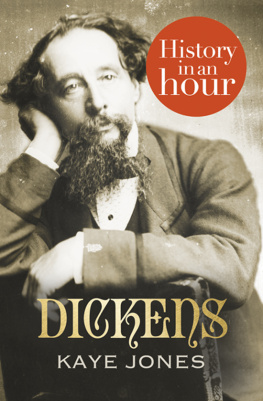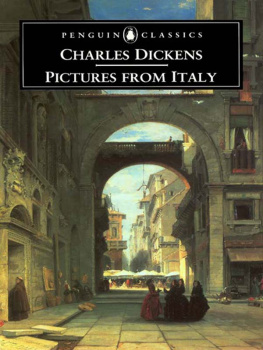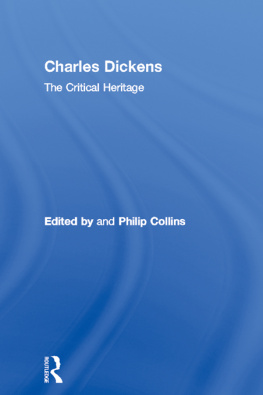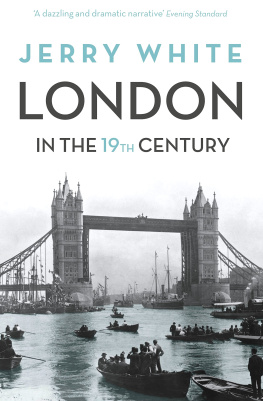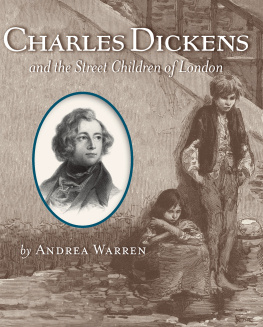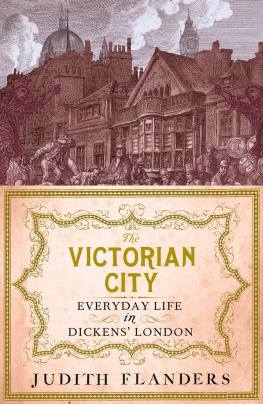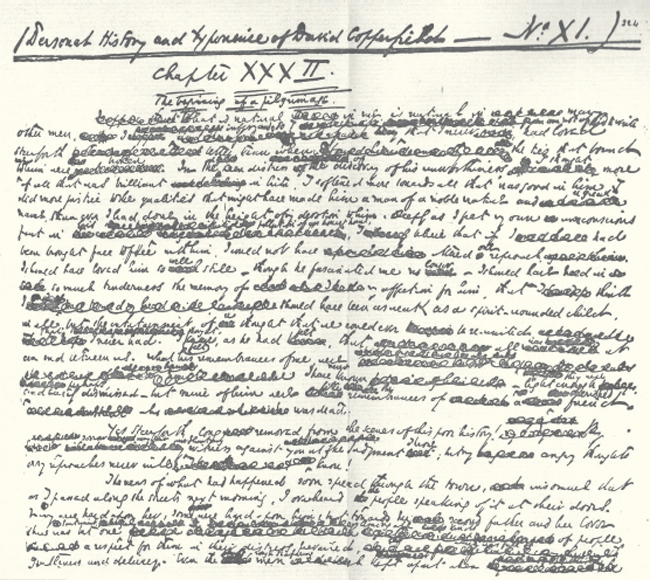WALKING DICKENS LONDON
LEE JACKSON
SHIRE PUBLICATIONS
CONTENTS
INTRODUCTION
So you were never in London before? said Mr Wemmick to me.
No, said I.
I was new here once, said Mr Wemmick. Rum to think of now!
You are well acquainted with it now?
Why, yes, said Mr Wemmick. I know the moves of it.
Great Expectations
I ADMIRE THE DICKENSIAN IDEA that one comes to know the moves of London. It implies a shifting, evasive opponent, which somehow must be wrestled into submission a city that will attempt to fox and confuse the casual stranger. The implication is almost that London can never be truly known. Nonetheless, this guide presents eight walks through the heart of Dickens London, which will, at the very least, put you in a similar position to Mr Wemmick. The book is intended to be both compact and specific. All the walks, with one exception, take place entirely within central London; and I have included various references to Dickens life, characters in his novels, and pieces of his journalism. As well as famous locations, historic pubs and quirky museums, this guide will direct you to obscure landmarks that are not part of the standard tourist trail; it will set you wandering through neglected courtyards and alleys, from the West End to the City of London, and along the river Thames. Moreover, while I will point out where particular buildings once stood, you should also discover many aspects of the Victorian metropolis surviving in modern London.
DICKENS COMES TO LONDON
Charles Dickens, the son of John Dickens, an assistant clerk in the Navy Pay Office, was born in Portsmouth on 7 February 1812. Johns employers periodically moved him from one location to another, and Charles early childhood was spent in Portsmouth, London, Sheerness and Chatham. The family returned to London in 1822, when John was recalled to Somerset House on the Strand. This was the young authors proper introduction to the great metropolis and it was a difficult time. For a short period the family lived on the borders of respectability in Bayham Street, Camden, a lower-middle class district. John, however, struggled with mounting debts and was committed to the Marshalsea debtors prison in 1824. The young Charles, meanwhile, was obliged to leave his schooling and go to work, labelling pots of boot-black at Warrens blacking factory. Both of these episodes left a profound mark on the author.
John Dickens left prison after only three months, helped by a fortuitous legacy, and Charles was eventually returned to education. Yet the fortunes of the Dickens family were hardly settled, and as a result of another financial crisis in 1827 Charles again had to find employment. He began work as a solicitors clerk in Grays Inn and found the job profoundly unsatisfying. Consequently, the following year, he embarked on a career as a journalist, teaching himself shorthand an early sign of his determination and restless ambition and began working as a freelance reporter in the law courts of Doctors Commons. He then moved on to reporting on parliamentary affairs. His first piece of published fiction was in the Monthly Magazine in 1833, but he continued working as a journalist and even toyed with the idea of becoming either a barrister or an actor. While at the Morning Chronicle newspaper in 1834 he began writing a series of pieces on London life, many in a humorous vein, which would be collected together in 1836 as Sketches by Boz. He then created the character of Mr Pickwick, after a commission from the newly founded publishers Chapman & Hall. The storys first number was published in March 1836. The Pickwick Papers was an immediate and roaring success. Oliver Twist and Nicholas Nickleby followed in swift succession. By the end of the 1830s Dickens was already an established star of the nineteenth-century literary firmament and would remain in that exalted position until his death in 1870.
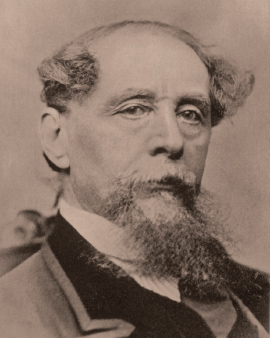
Charles Dickens in 1868.
THE CHARACTER OF DICKENS LONDON
This book takes you on eight tours of the streets that Dickens himself walked and shows you some of the buildings and sights that featured in his life and work. Nevertheless, as you walk through the city, you will have to use your imagination and make several adjustments if you wish to picture it in its early Victorian heyday.
Dickens London was, above all, a gloomier city. Fog, heavy with pollution from domestic coal fires and the factory chimneys of the South Bank, could shroud the whole capital in darkness. At night link-boys carried flaming torches, hoping for a tip of a few pennies, to guide the wealthy back to their homes. Gas was introduced in the 1810s, but not universally taken up. While Londons shops competed over ever increasing displays of plate glass, illuminated by dozens of gas jets, the proprietor of the Haymarket Theatre (in consequence of some absurd prejudice) ignored his rivals and stuck to oil lamps until 1853. The brightness of electric lighting did not begin to supersede the flickering yellow glow of gas until the last decades of the century.
Fog was not merely a visual phenomenon. It smutted the clothing and left the throat sore, inflaming lung complaints. When the winter fogs subsided, there were other hazards: dried horse dung filled the streets in the summer and turned into a noxious airborne dust. Parishes sent round water-carts to spray the main thoroughfares, and crossing-sweepers would clear a path from one side of a road to the other, but the roads were generally rather foul and messy. Cobbles were being replaced by other forms of paving, but the principal method was using macadam small chunks of stone pummelled down into a flat layer which was often loosened and dug out by the passage of carriage wheels, adding to the filth on the streets.
Although we perhaps have an idea of a typical Victorian street, the buildings of Dickens London were not of one homogenous style. Among carefully planned Georgian squares and terraces, and newer developments, there were still many survivals from previous eras, and also many slum dwellings. These were generally old houses in varying states of decay rather than purpose-built shanties, although both could be found. Likewise, when we think of Victorian public buildings, we tend to picture the dramatic Victorian Gothic that flourished from the mid-century, for example the Midland Grand Hotel, built in the late 1860s. Most public buildings of Dickens time, however, were neo-classical or Italianate in style. We shall see both types of architecture in our walks.
An original manuscript page fromDavid Copperfield.
What this book can never show you is the people: wealthy men in stove-pipe hats and silk suits; the more dandified fast sorts with colourful waistcoats and jewelled tie-pins; poorer men dressed in coarse cotton fustian; well-to-do women in various sizes of crinoline, according to the year and the fashion; working-class girls parading a handful of feathers or ribbons, or a particular kind of bonnet, to compete in style. These are the people whom you will meet only in Dickens writing. You may, at least, use this guide to stroll in their footsteps.

